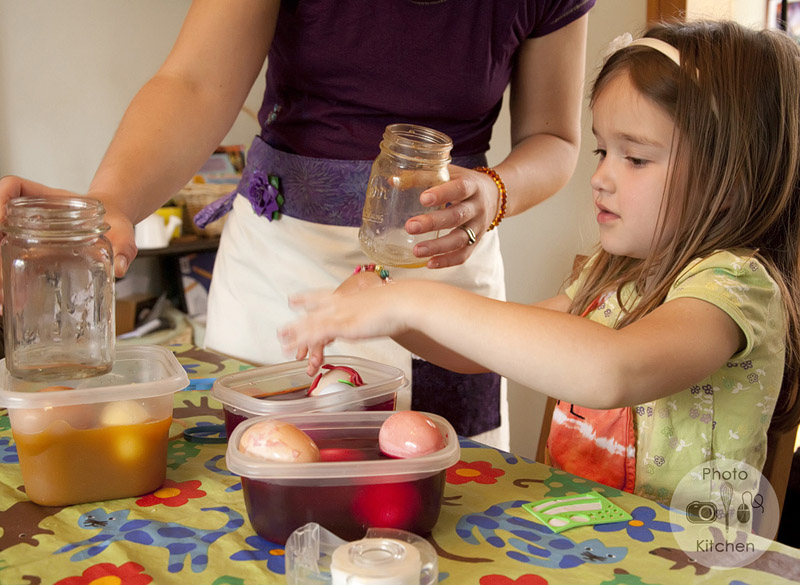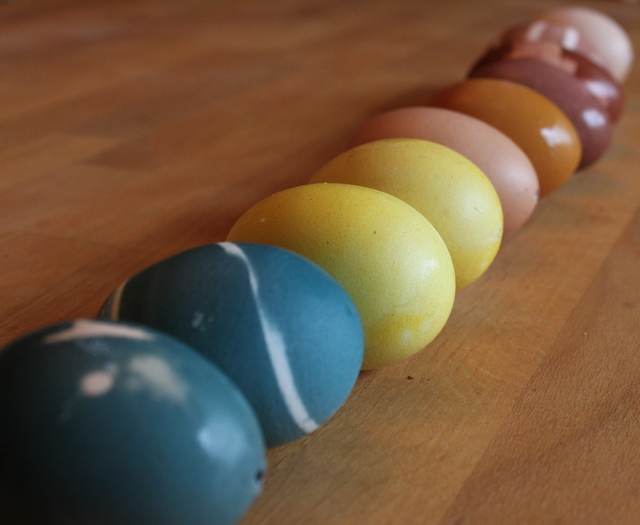The talented Catherine of Photo Kitchen came over last week to take photographs for Hounds in the Kitchen Egg Week. Today's conclusion follows tutorials for blowing out eggs, making natural dyes, baking a dutch baby, and creating eggshell seedling cups.
 A year and a month after collecting our first pullet egg, we have learned a few things. Today we share our top five facts about backyard eggs.
A year and a month after collecting our first pullet egg, we have learned a few things. Today we share our top five facts about backyard eggs.
1) Eggs are laid with a special impermeable coating that keeps them fresh at room temperature. So long as we have space, we still refrigerate ours, but it's nice to know that they are edible for weeks if we want to store them on the counter.
2) Fresh eggs, hard boiled, are difficult to peel. As eggs age, they lose moisture and naturally detract from the shell. Very fresh eggs are so full of moisture that the white sticks to the shell like it is hanging on for dear life. Adding a few tablespoons of white vinegar to the boiling water increases 'peelability'.
3) Hens lay eggs without a rooster. Eggs are the product of a hen's menstural-like cycle, one which goes on whether a rooster is around or not. Conversely, eggs will not develop into chicks unless a rooster fertilizes them. Children are usually sad to learn that our eggs will not turn into baby chicks.
4) Each breed has a uniquely colored and shaped egg. We can identify who is laying and who is not simply by the color and shape of the eggshells collected. Some breeds, like the Aracuana and Barnevelder, are recognized for the unusual color of their eggshells.
5) Collecting eggs is a treasure hunt for the most versatile ingredient we can raise ourselves. Whether Lil up-ends herself into the coop or Alex and I reach into the nest box, we are delighted on a daily basis at the golden jewels we find.
All photos with the Photo Kitchen watermark belong to Catherine and were generously shared with me. You may purchase copies and view the whole set of photographs in the online gallery. Use the coupon code houndscrossover to receive 25% off prices until May 15.
P.S. Happy Earth Day! May you challenge yourself to a greener lifestyle, enjoy America's natural resources, and perhaps even procure some free earth-friendly goodies like a Northstar veggie burger.
Added to Fight Back Friday April 22.
















